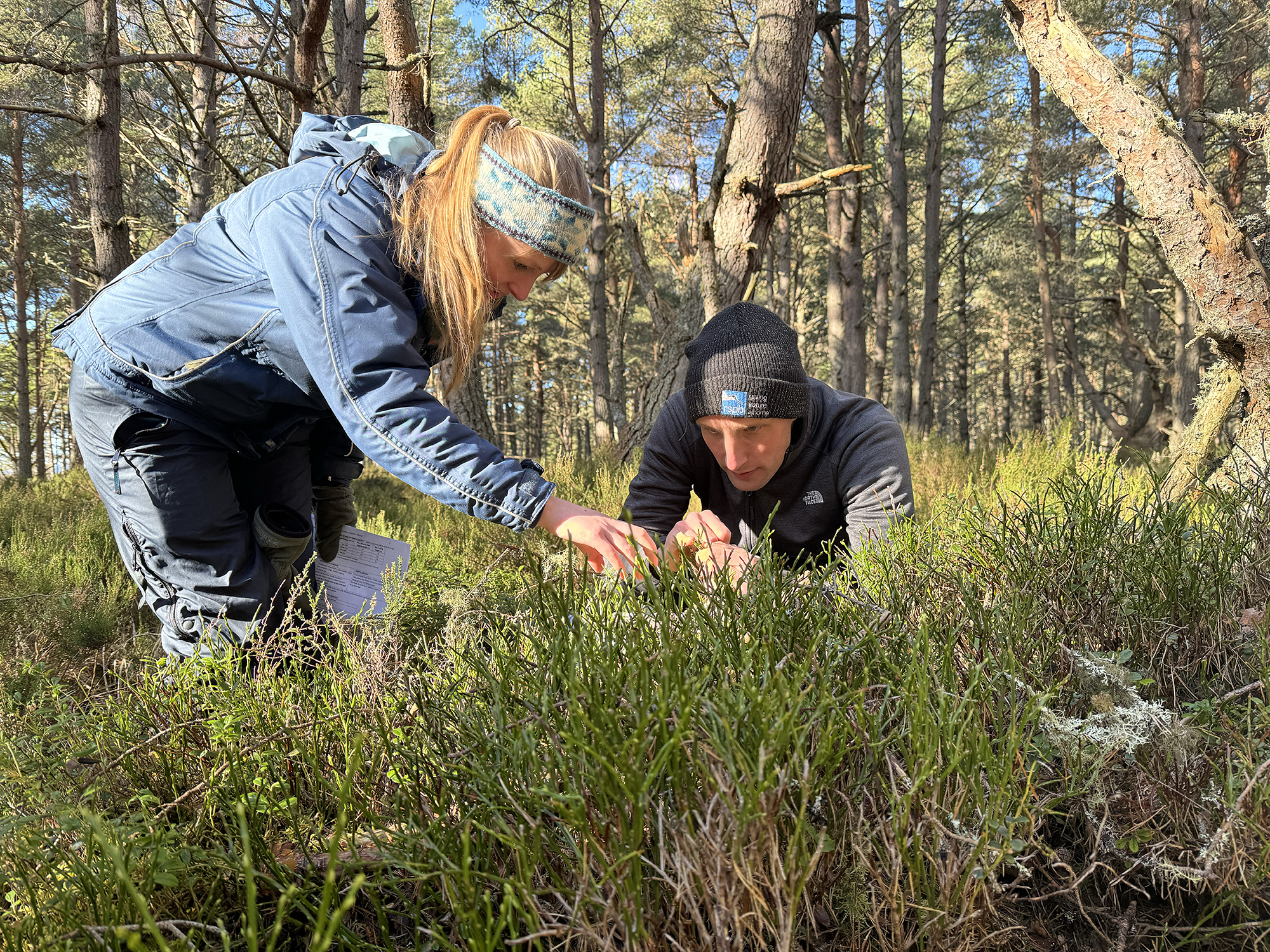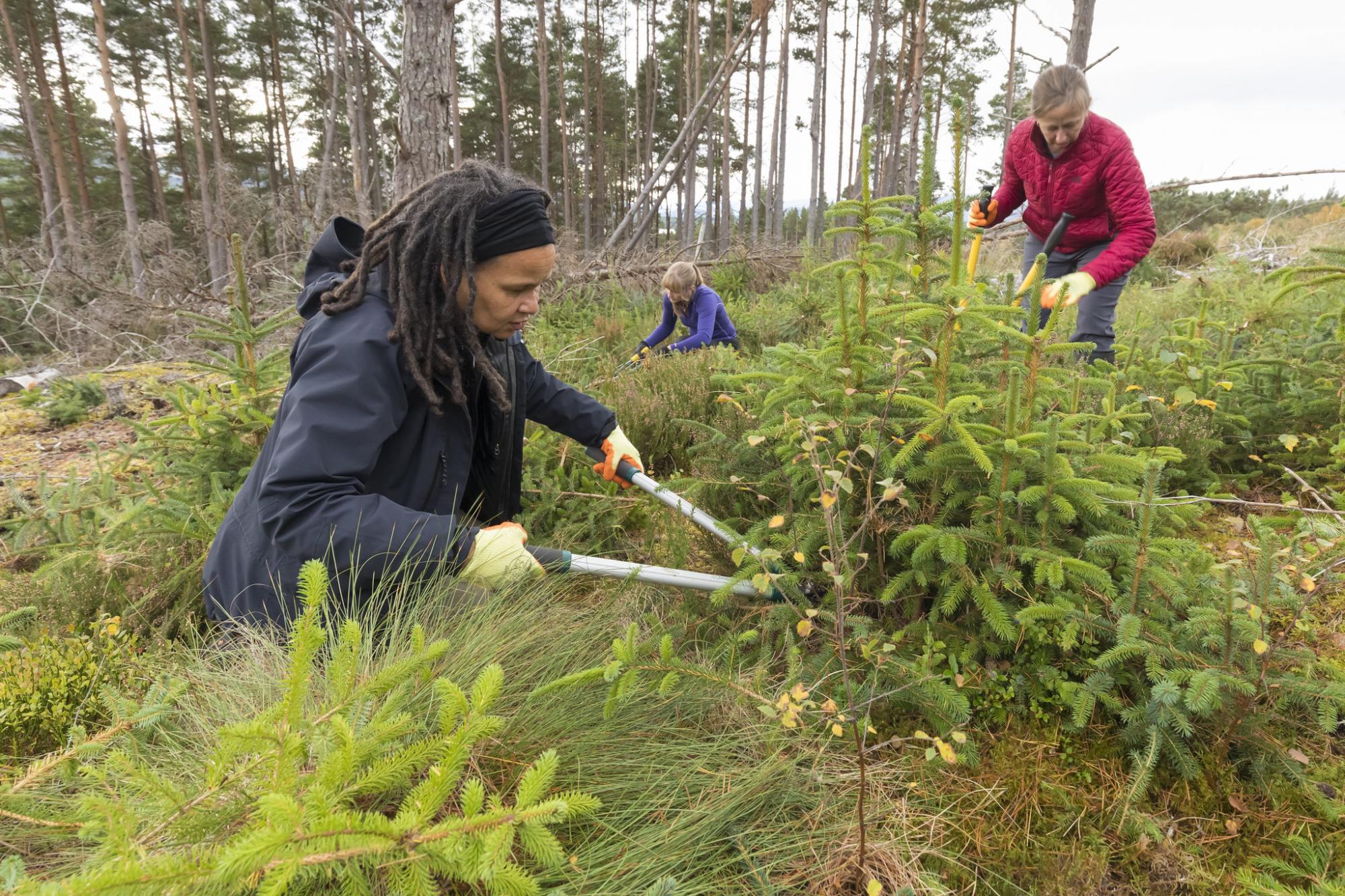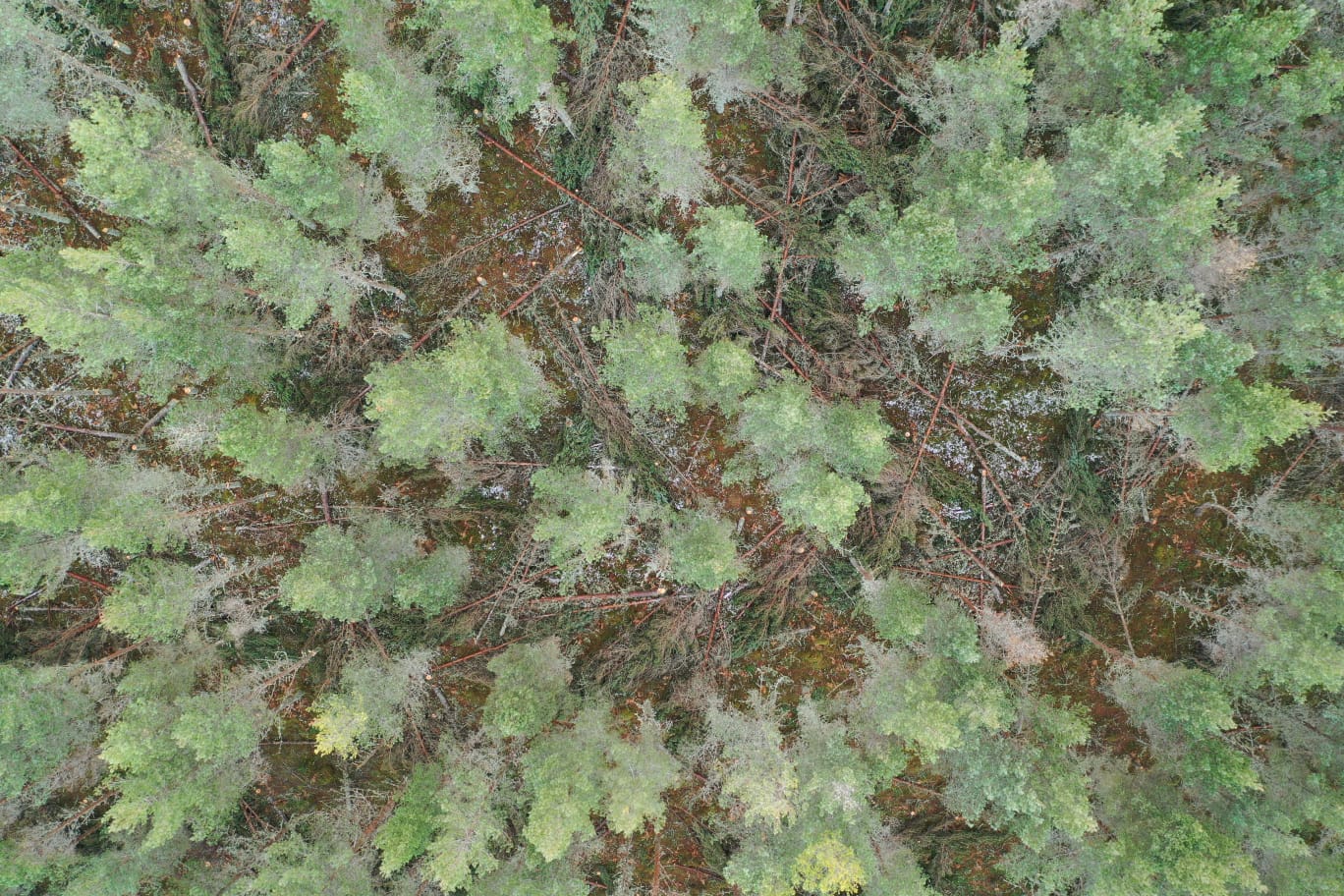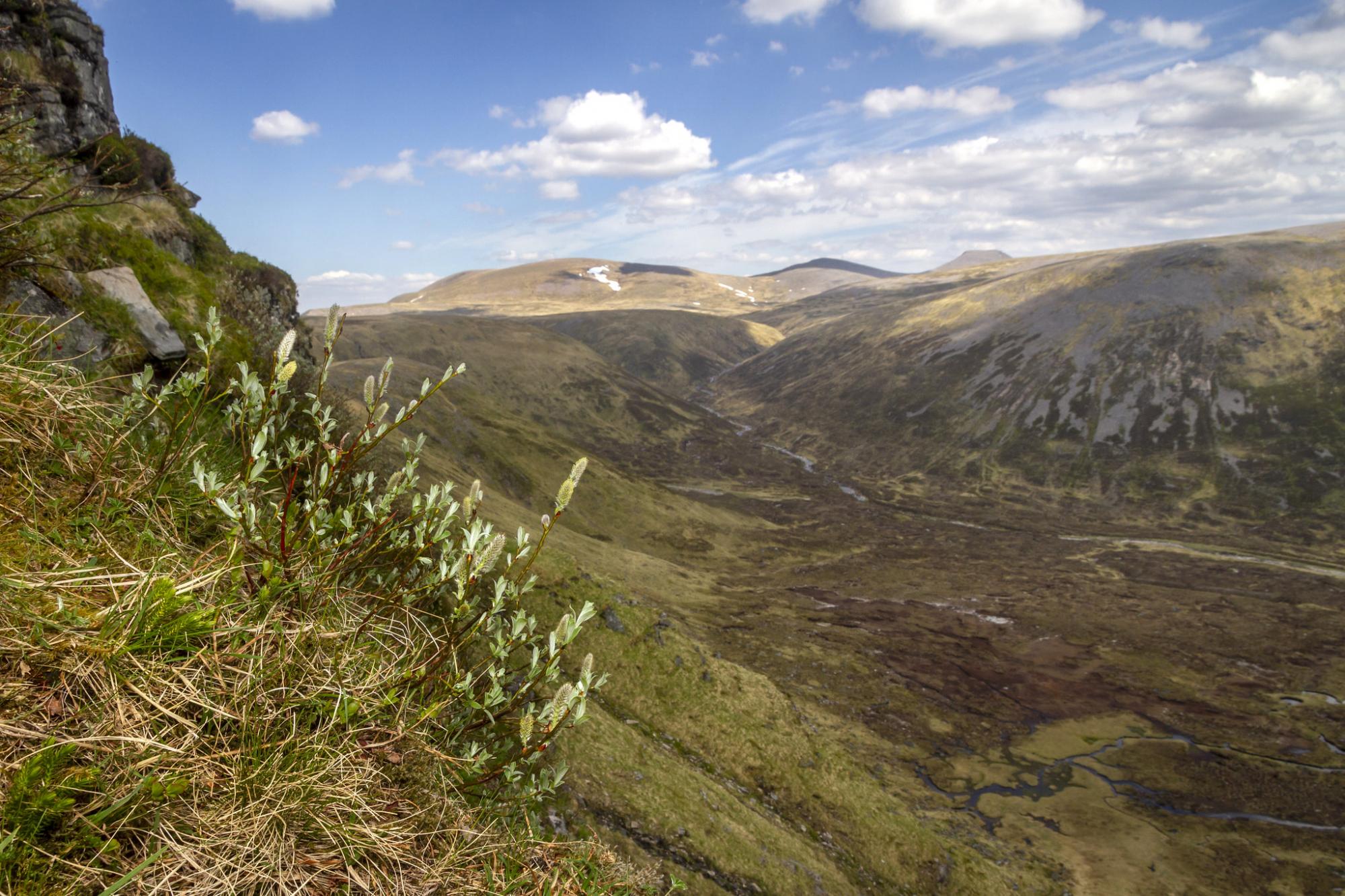

If you imagine walking through the British uplands, you probably picture wide open views and hillsides of heather, with the occasional patch of forest and maybe a birch or rowan tree here or there. What you probably don’t picture, is the abundance of native pinewood and broadleaved trees that would once have enriched these landscapes.
In Scotland, native pinewoods now cover only about 1% of their former range, following centuries of human intervention – first felling the trees and then grazing the land with livestock.
Our forest restoration vision tracks plans to double the existing forest in size, largely through natural regeneration, the process whereby forests recover using their natural ability to spread seeds and expand. We are working to expand our native woodlands to their natural limit, restoring existing forests and enhancing high altitude woodlands and montane scrub habitats which are largely missing from this landscape. Restored forests support a wide range of life, lock up carbon and reduce flood risk.
We’ve got ambitious aims to restore forests in the hope that future generations will once again be able to experience a vast habitat overflowing with life. Forests are also vital in the face of the climate crisis, and lock up carbon in their leaves, trunk, branches and soil.
Our forest restoration work involves:

A key factor holding back forest expansion is over-browsing by an unsustainably large Deer population, whose nibbling teeth mean young saplings have little hope of growing into forests.
By reducing Deer numbers, a blanket of Heather and Blaeberry (known as the ‘dwarf-shrub field layer’) can recover, and native species of trees have a chance to spread their seeds to expand and diversify the forest.
We carefully monitor the browsing effects of Deer and other herbivores across the partnership using Herbivore Impact Assessments. This informs our Deer Management work, which you can read about in more detail here.

Restoring a healthy, biodiverse native woodland depends on the control and removal of non-native trees and shrubs. These may be mature non-native trees, or young trees growing from wind-blown seed in our native woods.

The Cairngorms Connect partners are working to restructure plantations by felling and pulling over trees, partly to produce timber, but also to create more dead trees and increase the light on the forest floor. Dead trees (also known as ‘deadwood’) are an important part of a natural forest ecosystem and benefit a range of wildlife from invertebrates and forest plants to capercaillie and young trees.
We aim to diversify plantations by retaining more gnarled and open-crowned trees, and creating space around Birch, Rowan, Juniper and other species that have survived in the dense forest. This encourages variation in species and ages of trees which creates a healthier, more natural forest environment.

We are working to restore tree species that have been, or are close to being, lost from our native woods due to unsustainable grazing pressure and past land management practices. Our landscape-scale restoration efforts are helping to enable natural regeneration where possible, but in some areas, there isn’t an existing seed source, available or suitable habitat conditions for species to recover on their own.
Therefore, in some specific circumstances, we are planting trees using strategic, targeted planting. In future, these trees will create and spread their own seed, supporting natural regeneration in the long-term.
We collect seed and cuttings from struggling populations of native tree species in the Cairngorms Connect partnership area and propagate these to build sufficient planting stock. Most of this is done in our own Cairngorms Connect Tree Nursery, which you can read about here.
In some areas, we are trialing different ways to disturb the field layer and creating seedbeds to accelerate natural regeneration.